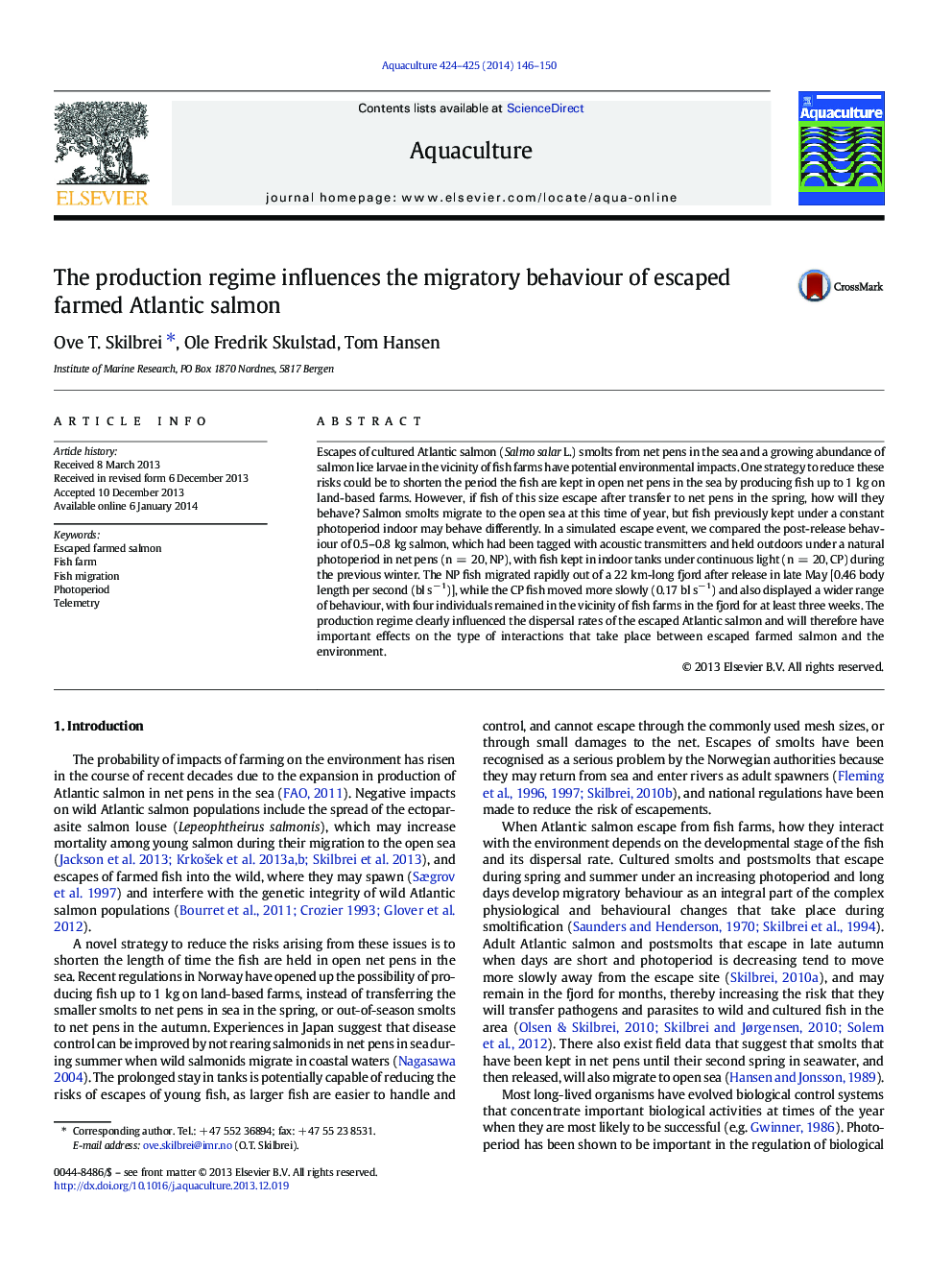| Article ID | Journal | Published Year | Pages | File Type |
|---|---|---|---|---|
| 8495271 | Aquaculture | 2014 | 5 Pages |
Abstract
Escapes of cultured Atlantic salmon (Salmo salar L.) smolts from net pens in the sea and a growing abundance of salmon lice larvae in the vicinity of fish farms have potential environmental impacts. One strategy to reduce these risks could be to shorten the period the fish are kept in open net pens in the sea by producing fish up to 1 kg on land-based farms. However, if fish of this size escape after transfer to net pens in the spring, how will they behave? Salmon smolts migrate to the open sea at this time of year, but fish previously kept under a constant photoperiod indoor may behave differently. In a simulated escape event, we compared the post-release behaviour of 0.5-0.8 kg salmon, which had been tagged with acoustic transmitters and held outdoors under a natural photoperiod in net pens (n = 20, NP), with fish kept in indoor tanks under continuous light (n = 20, CP) during the previous winter. The NP fish migrated rapidly out of a 22 km-long fjord after release in late May [0.46 body length per second (bl sâ 1)], while the CP fish moved more slowly (0.17 bl sâ 1) and also displayed a wider range of behaviour, with four individuals remained in the vicinity of fish farms in the fjord for at least three weeks. The production regime clearly influenced the dispersal rates of the escaped Atlantic salmon and will therefore have important effects on the type of interactions that take place between escaped farmed salmon and the environment.
Related Topics
Life Sciences
Agricultural and Biological Sciences
Aquatic Science
Authors
Ove T. Skilbrei, Ole Fredrik Skulstad, Tom Hansen,
